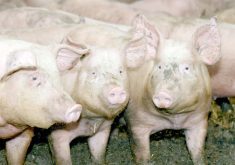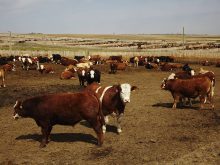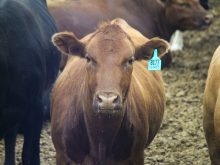Getting a scheduled time to cross the American border with a truckload of feeder cattle is like winning the lottery.
Producers sending feeder cattle to the United States can wait up to 10 days to get an appointment to ship across the border because of the large numbers of feeder cattle flowing to American feedlots.
“If I were to buy a load of cattle today and wanted to ship them to the U.S., I would have to phone to get a slot. I’m quite sure I wouldn’t get one for next week, it would be the week after now,” said Brad Martin of Elkhorn, Man., Oct. 12.
Read Also

Lending policy still focused on primary producers: Farm Credit Canada
Farm Credit Canada said it has not changed its business practices and remains committed to supporting all producers, after a report from an Ottawa-based media outlet claimed otherwise.
Even with a scheduled slot, trucks can wait a few hours at the border to get paperwork reviewed, cattle unloaded, checked, reloaded or rejected.
“There’s not enough border slots for people that want to sell cattle down there,” said Martin, who ships 25 to 30 liner loads to the U.S. each week, mostly through the North Dakota port of Dunseith.
The longer lineups have been caused by a combination of regular slaughter cattle shipments to American packing plants, increased paperwork for border security, new cattle export rules since BSE and the near record number of feeder cattle being shipped to the U.S.
Martin believes the lineups won’t get shorter with the beginning of the fall cattle run.
“I think it will be an ongoing thing. It’s going to stay busy at the borders for sure.”
Steve Primrose of Primrose Livestock in Lethbridge said the unloading of every load of feeder cattle at the border for inspection by a U.S. Department of Agriculture veterinarian takes time.
“They can only clear so many cattle a day. You can come but you’re not going to get across,” said Primrose. He has tried to streamline the process of getting cattle across the border with minimal delays.
“We’re exporters. We have a very good relationship with the vet on the other side. He sees our drivers every day of the week, 52 weeks out of the year,” he said.
“You pick up the phone and tell him you’ve got x amount of cattle coming over the next few weeks and then he says ‘I want them on these days.’ “
While the border crossings now require more planning, Primrose said it’s part of the new rules in the cattle business.
“You live with it.”














